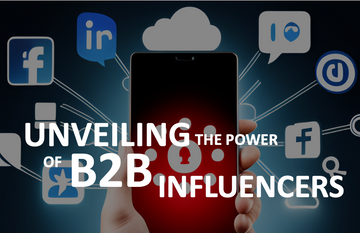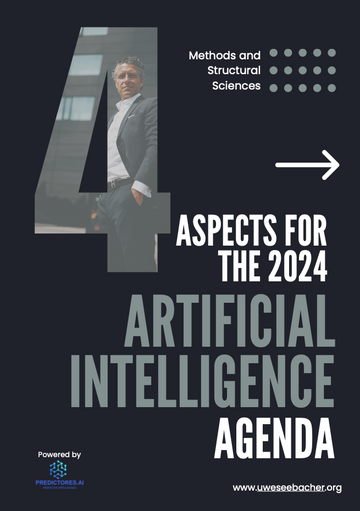
Why the term Corporate Influencer is an Oxymoron
What in some companies is called "Corporate Influencer" must - from a correct labeling in the context of academia and science - be rather called and considered as a B2B Influencer. Why? Because an influencer from its nature is brand neutral. Due to the fact that in the companies managers and employees are used and designated as Corporate Influencers, clearly these groups are not to be considered as "brand neutral". Very easily in today´s connected world, their brand affiliation can be found out. Employees and managers rather belong to the group of what we in academia and science call Brand Ambassadors (Sadrabadi et al, 2018). The term "Corporate Influencer" therefore falls into the category of Oxymorons.
An oxymoron is a rhetorical figure in which two contradictory terms or statements are combined. The result is an apparent inconsistency or paradox, often used to emphasize a contrast, create a surprising effect, or make a pointed point. An oxymoron can also be used as a stylistic device to convey a poetic or metaphorical meaning. Examples of oxymora include "bittersweet," "cold fire," or "black mold." The use of oxymora can serve to attract attention, make the reader or listener think, or create some tension in the language. But in the context of corporates the Corporate Influencer oxymoron rather is a risk factor when it comes to Brand Management and Corporate Communication. Caution is advised.
The Changing Landscape of Corporate Communication
In today's rapidly evolving business landscape, effective communication within organizations has become more critical than ever. Traditional top-down approaches are losing relevance, giving way to dynamic and interactive communication channels. One emerging trend that has gained momentum is the concept of B2B influencers. This blog post delves into the realm of reengineering corporate communication by exploring the challenges, urgency to act, as well as the risks and benefits associated with leveraging corporate influencers.
As the world becomes increasingly interconnected, communication dynamics in the corporate world are evolving. The rise of digital transformation has disrupted traditional communication practices, opening doors to new possibilities. We are in the midst of the change from 1-2-1 communication in channels towards All-2-All (A2A) 24/7 interaction in and across arenas. These changes require totally new concepts and competences from the corporate communicators. Companies are realizing the importance of embracing a more authentic and transparent approach to their messaging. The days of one-way communication are fading, and organizations are recognizing the need for active engagement and dialogue with their stakeholders.
Understanding B2B Influencers
B2B influencers can be defined as individuals within or outside an organization who possess the ability to influence others through their expertise, credibility, and authentic voice. These influencers play a vital role in shaping and disseminating corporate messaging, both internally and externally. While external influencers are often industry experts or thought leaders - and if comprehensibly brand neutral than to be called Corporate Influencers, internal influencers are B2B influencers as employees who possess subject matter expertise and can act as advocates for the organization.
Identifying potential influencers and nurturing their skills are essential steps in harnessing their power. These individuals should possess a deep understanding of the organization's values, mission, and goals. Moreover, they must have the ability to effectively communicate and engage with various stakeholders, thereby creating a ripple effect throughout the organization and beyond.
The Challenges of Adopting Influencers in Corporate Contexts
Although the concept of influencers holds immense potential, organizations face several challenges when integrating them into their communication strategies. Traditional hierarchies and power structures may resist this shift, as it disrupts established channels of communication and challenges the status quo. Convincing leaders to embrace the concept of influencers requires demonstrating the value they bring in terms of increased engagement, credibility, and brand reputation. The Munich based global player Siemens can be considered as a benchmark in this context. Since many years the influencer concept has been developed and deployed very successfully (Weinländer, 2022).
Identifying and nurturing potential influencers within the organization can also be a challenge. It requires a comprehensive assessment of employees' skills, expertise, and passion areas. Furthermore, organizations must strike a balance between the role of influencers and existing communication strategies to ensure consistency and avoid confusion among stakeholders.
The Urgency to Act
The urgency to adopt influencers in corporate context stems from the evolving communication landscape and the need for organizations to adapt and stay relevant based on the Corporate Communication growth model. Leveraging influencers allows businesses to tap into the power of employee advocacy and engagement. When employees become influencers, they become brand ambassadors, sharing authentic stories and experiences that resonate with external audiences.

Authenticity is a key driver in building trust with stakeholders. B2B and Corporate influencers provide a means to establish credibility by showcasing the expertise and thought leadership within the organization. This, in turn, enhances the brand's reputation and positions it as a trusted authority in its respective industry.
Furthermore, leveraging influencers expands the reach of corporate messaging. Their networks and spheres of influence extend beyond traditional communication channels, enabling organizations to connect with new audiences and amplify their brand's visibility.
Risks and Mitigation Strategies
While the benefits of influencers are compelling, organizations must be aware of the risks and proactively address them. Maintaining consistency and alignment with organizational values is crucial. Influencers should be aligned with the company's vision, ensuring that their messaging does not contradict or undermine the organization's core principles.
Another risk to consider is managing potential conflicts of interest. Influencers may have affiliations with other brands or engage in activities that could compromise their credibility. Establishing clear guidelines and ethical considerations can mitigate these risks and ensure that influencers act in the best interest of the organization.
Furthermore, negative feedback or controversy involving influencers can pose challenges. In this context the Predictive Interaction Intelligence (PII) as brought into the discussion by me in 2022, is a must-have and requires an integrated Interaction-Techology-Stack (InTechStack). A stand alone CommTech Stack cannot provide enough data and intelligence for deploying a such PII, as in detailed explained and described in my book on "Reengineering Corporate Communication". Organizations must be prepared to handle such situations promptly and transparently, addressing concerns and maintaining open lines of communication with stakeholders.
Benefits of Leveraging Influencers
When implemented effectively, leveraging influencers can yield numerous benefits for organizations. First and foremost, it amplifies brand messaging and visibility. By utilizing the power of employee advocates, organizations can reach wider audiences and increase the impact of their communication efforts.
Incorporating influencers also fosters a culture of collaboration and empowerment within the organization. When employees are given a voice and the opportunity to contribute to the company's narrative, it enhances their sense of belonging and engagement. This, in turn, leads to increased employee morale and retention.
Additionally, leveraging influencers allows organizations to tap into diverse perspectives and expertise. By encouraging employees to share their unique insights and experiences, companies can leverage their collective knowledge to drive innovation and thought leadership.
Implementing an Effective Influencer Strategy
To harness the power of B2B and corporate influencers, organizations need to develop a comprehensive strategy that aligns with their communication objectives and target audiences. This includes identifying the key areas where influencers can make the most impact and tailoring their messaging accordingly. The buzzwords are the Communication Journey, the Communication Personas as well as Segment-based Interacionn (SBI).
Training and development programs should be designed to equip influencers with the necessary skills and knowledge to effectively communicate and engage with stakeholders. How the newly required competences look like must also be considered as there will be a significant change in required skills and competences.

Regular evaluation and feedback loops should be established to measure the impact and success of influencer initiatives, allowing organizations to refine their strategies and adapt to changing needs.
Case Studies: Successful B2B Influencer Programs
Several companies have established themselves as benchmarks when it comes to corporate influencers. Here are a few notable examples:
-
Adobe: Adobe has successfully leveraged B2B influencers to promote their products and services. They have a team of Adobe Insiders who are experts in various fields and share their knowledge and experiences through blog posts, social media content, and speaking engagements.
-
Microsoft: Microsoft has a strong presence in the B2B influencer space. They have a program called "Microsoft MVPs" (Most Valuable Professionals) that recognizes and empowers individuals who are influential in their respective technology communities. These MVPs actively engage with the community, sharing insights and expertise.
-
Salesforce: Salesforce has a program called "Salesforce MVPs" that recognizes individuals who have demonstrated exceptional expertise and leadership in the Salesforce ecosystem. These influencers contribute to the community through blog posts, speaking engagements, and active participation in user groups.
-
IBM: IBM has embraced the power of B2B influencers through their IBM Champions program. IBM Champions are professionals from various industries who have expertise in IBM technologies and are recognized for their contributions to the community. They act as advocates, sharing their knowledge and promoting IBM solutions.
-
HubSpot: HubSpot, a leading marketing and sales platform, has a strong focus on inbound marketing and content creation. They have successfully built a community of B2B influencers, known as "HubSpot Partners," who share their expertise and experiences to help others in the industry.
These companies have demonstrated the effectiveness of incorporating B2B influencers into their marketing and communication strategies, establishing themselves as benchmarks in the field.
Conclusion
As organizations strive to adapt and thrive in the digital era, reengineering corporate communication is crucial to maintain relevance and build trust with stakeholders. The concept of B2B and corporate influencers provides a unique opportunity to revamp communication strategies by embracing authenticity, employee advocacy, and dynamic engagement. While challenges and risks exist, the potential benefits outweigh them. By carefully crafting and implementing an influencer strategy, businesses can unlock the power of their employees, enhance their brand's reputation, and create a communication culture that resonates in the modern world.
If you want to get more insights or discuss your individual challenge, then do not hesitate to contact me through my Contact form or even directly request for a meeting. I look forward talking to you and your colleagues.





